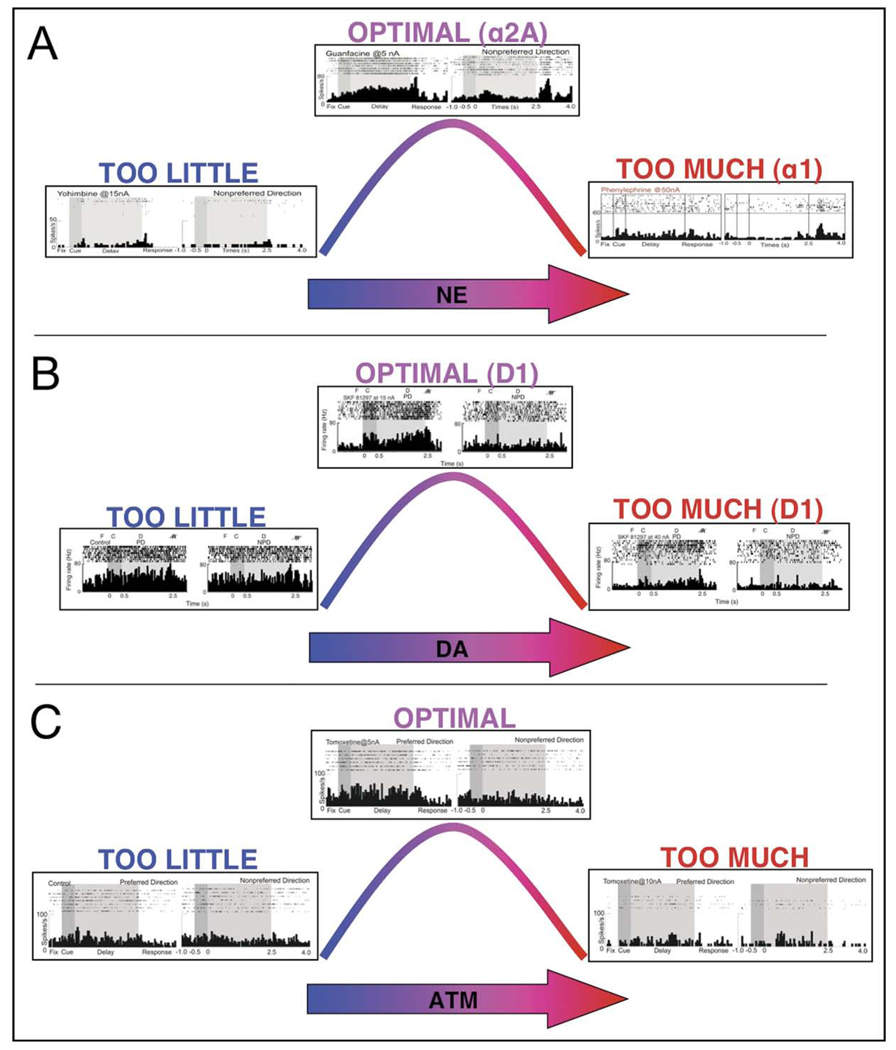FIGURE 4.
Physiologic responses to catecholamines in monkey prefrontal cortex. Note: (A) Norepinephrine (NE), (B) dopamine (DA), and (C) atomoxetine (ATM) show inverted-U dose-response curves on delay-related activity in a monkey performing the oculomotor delayed response task. (A) Optimal levels of NE enhanced delay-related activity for the preferred direction via α2A adrenoceptors, whereas excessive levels suppressed firing via α1 and β1 adrenoceptors.16,32 (B) Optimal levels of DA enhanced spatial tuning by suppressing delay-related firing for the nonpreferred direction, whereas excessive levels suppressed firing for preferred and nonpreferred stimuli.17 (C) A low dose (5 nA) of ATM enhanced delay-related firing for the preferred direction, whereas a higher dose (10 nA) suppressed firing. Low and high doses were tested in four neurons; in the remaining cells, only a low or high dose was able to be tested within the testing session.

